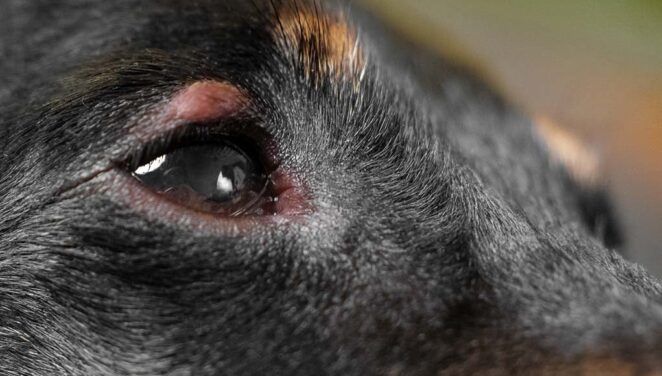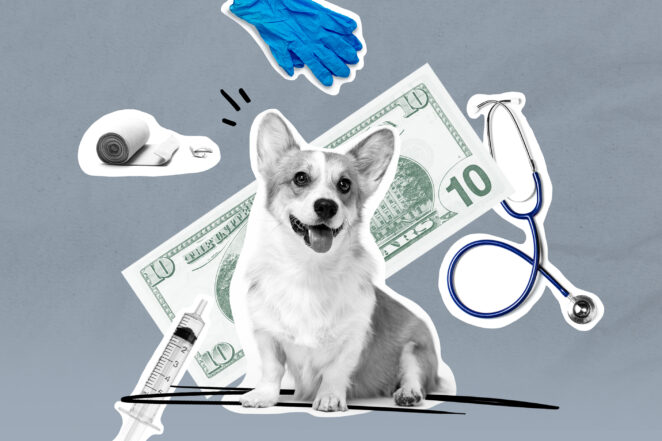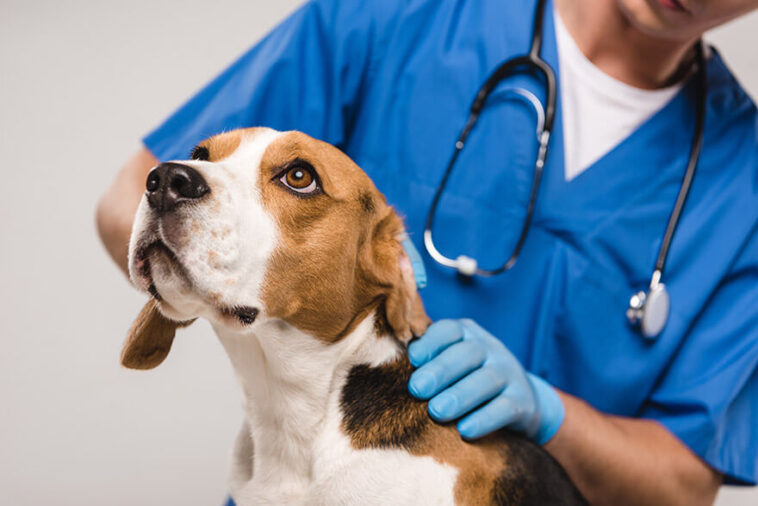As a dog owner, it’s essential to be aware of common health issues that can affect your furry friend. Knowing what signs to look out for and how to prevent and treat these issues can help ensure your dog lives a happy and healthy life. In this article, we’ll explore some of the most common health issues in dogs and provide you with a guide to understanding and addressing them.
Obesity
Obesity is a significant health concern for dogs, just as it is for humans. It can lead to a range of health problems, including diabetes, joint problems, and heart disease. As a responsible dog owner, it’s important to take steps to prevent obesity in your furry friend.
The first step in preventing obesity is to feed your dog a healthy, balanced diet. This means providing them with the appropriate amount of food for their age, size, and activity level. It’s essential to avoid feeding your dog table scraps and human food, as these are often high in fat and calories and can contribute to weight gain.
In addition to providing a healthy diet, it’s important to ensure your dog gets enough exercise. Regular walks, playtime, and other physical activity can help your dog burn calories and maintain a healthy weight. However, it’s important to start slowly and gradually increase activity levels to avoid injury or overexertion.
If your dog is already overweight, it’s important to work with your veterinarian to develop a weight loss plan. This may include changes to their diet, exercise routine, and medication if necessary. It’s important to remember that weight loss should be gradual and that crash diets or rapid weight loss can be dangerous for dogs.
Dental problems

Dental problems are a common health issue for dogs, and they can lead to bad breath, tooth decay, and gum disease. As a responsible dog owner, it’s essential to take steps to prevent dental problems in your furry friend.
One of the most effective ways to prevent dental problems is to brush your dog’s teeth regularly. Use a soft-bristled toothbrush and toothpaste specifically formulated for dogs. Start slowly, gradually building up to longer brushing sessions, and be sure to reward your dog with praise and treats for their cooperation.
In addition to regular brushing, providing your dog with dental chews and toys can help keep their teeth clean and healthy. These chews and toys are designed to scrape away plaque and tartar from your dog’s teeth, reducing the risk of dental problems.
Regular veterinary check-ups are also essential for preventing dental problems. During these check-ups, your veterinarian will examine your dog’s teeth and gums for signs of decay or disease. They may also recommend professional dental cleanings to remove any built-up plaque or tartar.
If your dog does develop dental problems, it’s important to address them promptly. Your veterinarian may recommend treatment options such as antibiotics, tooth extraction, or root canal therapy, depending on the severity of the issue.
Parasites
Parasites are another common health issue for dogs, and they can cause a range of problems, including skin irritation, digestive issues, and even more severe conditions like heartworm disease. As a responsible dog owner, it’s important to take steps to prevent parasites in your furry friend.
One of the most effective ways to prevent parasites is to use preventive medications prescribed by your veterinarian. These medications are available in various forms, including pills, topical treatments, and collars. They work by killing or repelling parasites, reducing the risk of infestation.
Regular grooming is also essential for preventing parasites. This includes regular bathing, brushing, and checking your dog for fleas and ticks. If you do find fleas or ticks on your dog, it’s important to remove them promptly and thoroughly to prevent infestation.
Keeping your dog’s living environment clean and tidy can also help prevent parasites. This includes regularly cleaning their bedding, toys, and any other areas where they spend time. Be sure to also pick up after your dog when you take them on walks or allow them to play in public spaces.
If your dog does develop a parasitic infection, it’s important to address it promptly. Your veterinarian can recommend appropriate treatment options, which may include medications or other therapies.
Allergies

Allergies are common in dogs and they can cause a range of symptoms, including itching, sneezing, and skin irritation. As a responsible dog owner, it’s important to take steps to identify and manage your dog’s allergies.
One of the first steps in managing your dog’s allergies is to identify the cause. This may involve a visit to your veterinarian, who can perform allergy testing to determine what triggers your dog’s allergic reactions. Common allergens for dogs include pollen, dust mites, and certain types of food.
Once the cause of your dog’s allergies has been identified, there are several steps you can take to manage them. In some cases, avoidance of the allergen may be the best course of action. For example, if your dog is allergic to certain types of pollen, you may need to limit their outdoor activities during peak allergy season.
In other cases, medications may be necessary to manage your dog’s allergy symptoms. These may include antihistamines, corticosteroids, or immunotherapy. It’s important to work closely with your veterinarian to determine the best treatment plan for your dog’s specific needs.
Arthritis
Arthritis is a common health issue for dogs, particularly in older dogs. It can cause pain, stiffness, and difficulty moving, which can have a significant impact on your dog’s quality of life. As a responsible dog owner, it’s important to take steps to manage your dog’s arthritis and keep them as comfortable as possible.
One of the most effective ways to manage arthritis in dogs is to keep them at a healthy weight. Excess weight can put additional stress on your dog’s joints, exacerbating the symptoms of arthritis. Work with your veterinarian to develop a healthy diet and exercise plan for your dog.
Another important step in managing arthritis is to provide your dog with a comfortable living environment. This may include providing soft bedding and a warm, dry place to sleep. You may also need to make modifications to your home, such as providing ramps or steps to help your dog get around.
There are also several medications and supplements that can help manage the symptoms of arthritis in dogs. These may include non-steroidal anti-inflammatory drugs (NSAIDs), corticosteroids, or joint supplements like glucosamine and chondroitin. It’s important to work closely with your veterinarian to determine the best treatment plan for your dog’s specific needs.
Regular exercise can also help manage the symptoms of arthritis, but it’s important to choose activities that are low-impact and won’t put additional stress on your dog’s joints. Walking and swimming are both excellent options for dogs with arthritis. One effective way to address dog joint pain at home is by exploring natural remedies and lifestyle adjustments. For valuable insights and tips on dog joint pain home remedies, you can refer to Mighty Munch. By incorporating these strategies, you can support your furry friend’s joint health and overall well-being.
Ear infections

Ear infections can be caused by bacteria, yeast, or parasites, and can lead to discomfort and hearing loss in your dog. As a responsible dog owner, it’s important to take steps to prevent and manage ear infections in your dog.
One of the best ways to prevent ear infections is to keep your dog’s ears clean and dry. This includes regular ear cleaning, particularly if your dog is prone to ear infections. Your veterinarian can recommend appropriate cleaning solutions and techniques.
Regular grooming can also help prevent ear infections. This includes regular bathing, brushing, and trimming hair around your dog’s ears. Be sure to also check your dog’s ears regularly for signs of redness, swelling, or discharge.
If your dog does develop an ear infection, it’s important to address it promptly. Common symptoms of ear infections in dogs include shaking of the head, scratching at the ears, and a foul odor coming from the ears. Your veterinarian can recommend appropriate treatment options, which may include medications or other therapies.
Insurance
Now that we have discussed some common health issues in dogs, let’s talk about pet insurance. Pet insurance is a type of insurance that helps cover the cost of veterinary care for your furry friend. As with any type of insurance, the specifics of coverage will vary depending on the policy you choose.
Pet insurance policies typically cover expenses related to accidents, illnesses, and injuries, but may not cover routine check-ups or pre-existing conditions. Some policies may also have limitations on coverage for specific types of procedures or treatments.
When choosing pet insurance coverage, it’s important to carefully review the coverage and any exclusions or limitations. Consider your dog’s age, breed, and health history when selecting a policy, as these factors can impact the cost and coverage.
In addition to coverage, you should also consider the cost of the policy itself. Some policies may have lower monthly premiums but higher deductibles or co-pays, while others may have higher premiums but lower out-of-pocket costs.

Conclusion
In conclusion, being aware of common health issues in dogs and taking preventative measures can help ensure your furry friend lives a happy and healthy life. Regular veterinary check-ups can also help identify any health issues early on, allowing for prompt treatment and a better prognosis. With proper care and attention, you can help your dog stay healthy and happy for years to come.




